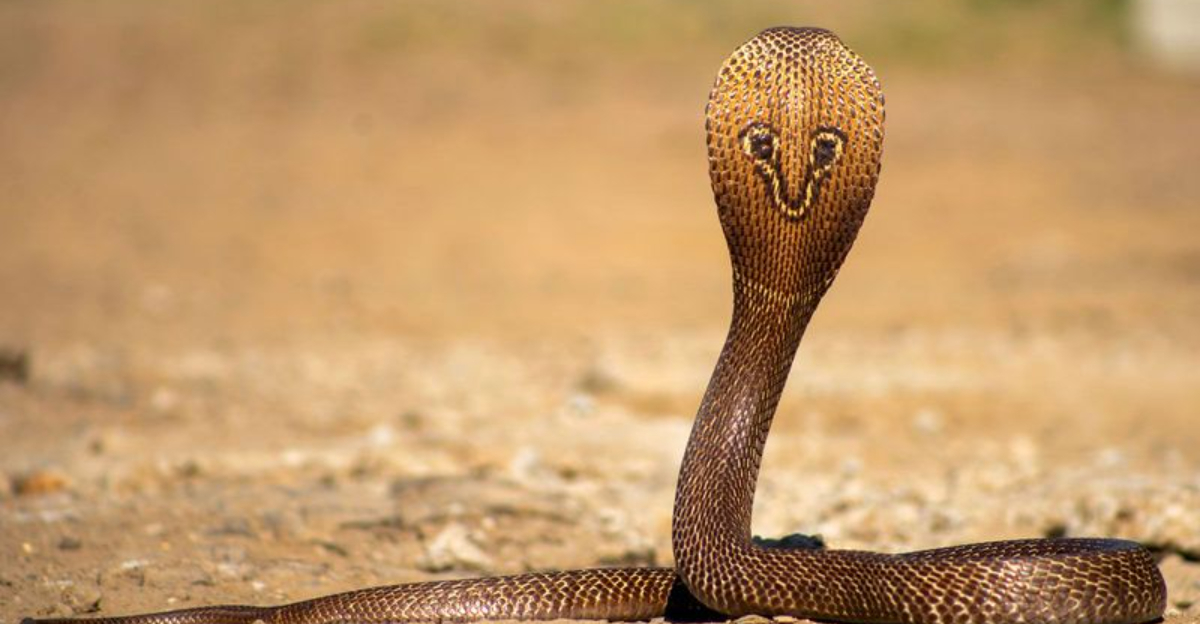The king cobra is one of the most fascinating creatures of the reptile world. Known for its size and venom, it holds a special place in the animal kingdom.
We’ll explore some intriguing aspects of this remarkable snake. From its unique behaviors to its habitat, there’s plenty to discover about the king cobra.
Let’s dive into these captivating facts.
1. The Longest Venomous Snake
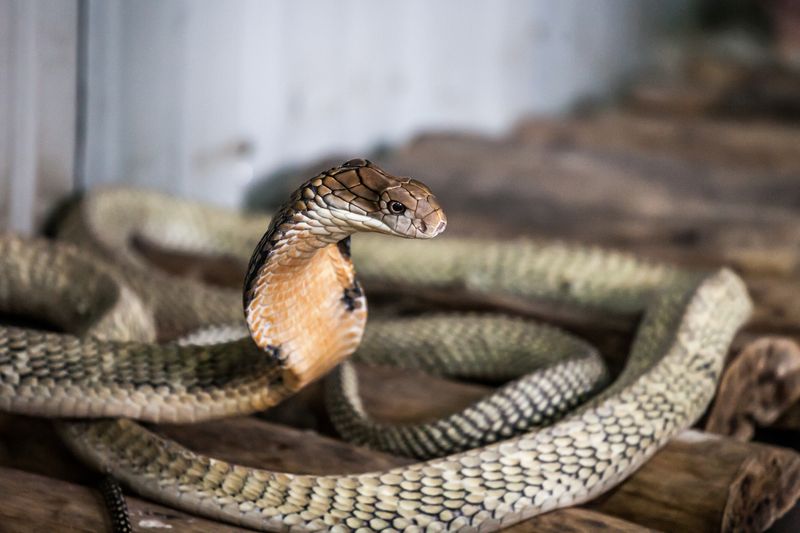
The king cobra is renowned as the longest venomous snake in the world, capable of reaching lengths up to 18 feet.
Its size grants it an awe-inspiring presence in its natural habitat, making it a formidable predator. These snakes are predominantly found in the lush forests of Southeast Asia, where they can easily camouflage and hunt their prey.
Despite their length, they are incredibly agile and can move swiftly through the thick underbrush. This agility is crucial for hunting and escaping threats. The king cobra’s length also aids in intimidating both prey and potential predators.
Understanding the king cobra’s size is essential in appreciating its role in the ecosystem. As apex predators, their presence helps to control the population of rodents and other small animals.
This balance is vital for maintaining the health of their environment, showcasing their importance beyond just their striking appearance.
2. A Taste For Other Snakes
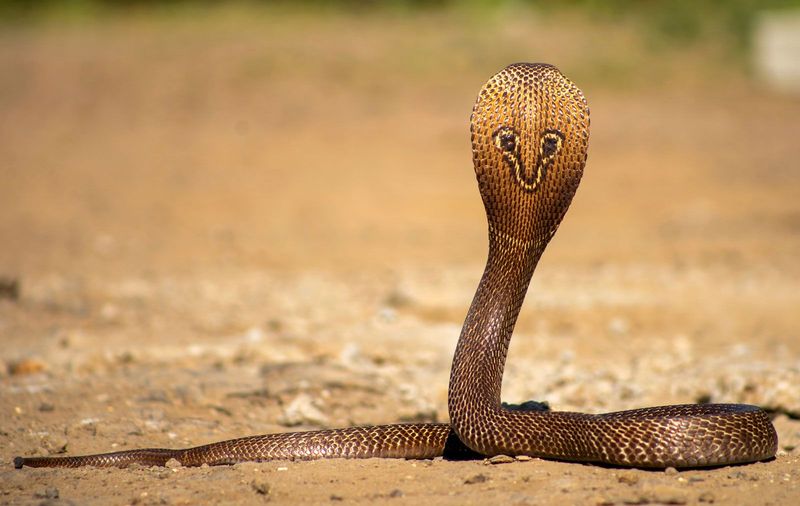
One of the most intriguing dietary habits of the king cobra is its preference for eating other snakes. This diet sets it apart from many other snake species, highlighting its unique position in the food chain.
Its ability to hunt and consume other venomous snakes is a testament to its adaptability and skill as a predator.
The king cobra’s venom is potent enough to subdue its snake prey quickly, allowing it to feast without much resistance.
This diet provides it with essential nutrients that are not commonly found in other prey types. This snake-eating behavior also helps maintain ecological balance by controlling the population of other potentially dangerous snake species.
Watching a king cobra hunt is a mesmerizing sight, showcasing its stealth and power. This aspect of their nature not only highlights their predatory prowess but also underscores their crucial role in their ecosystem, ensuring that snake populations remain in check.
3. Intelligent And Strategic
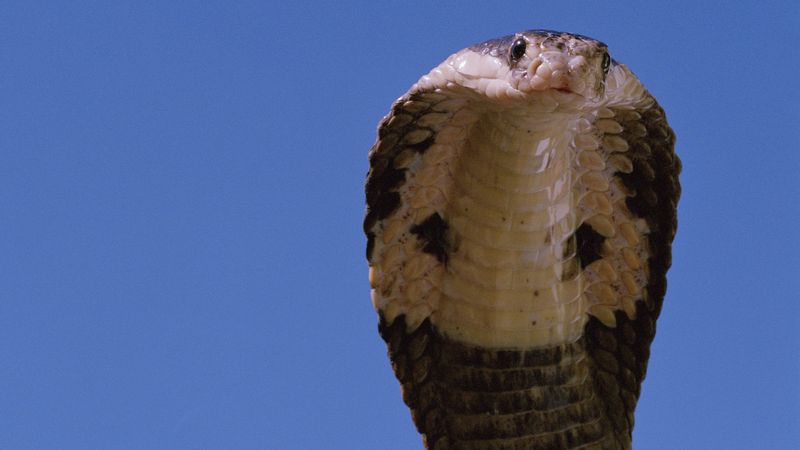
King cobras are not just physically imposing; they also display a high degree of intelligence. This intelligence is evident in their strategic hunting methods and their ability to learn from their environment.
Unlike many snakes that rely purely on instinct, king cobras often exhibit behavior that suggests they can adapt to different situations.
These snakes have been observed using strategic movements to corner their prey, indicating a level of planning that is rare among reptiles. They can also modify their hunting strategies based on previous experiences, showcasing a learning capability that enhances their survival.
Their intelligence extends beyond hunting. King cobras are also known for their territorial behavior, often defending their nests with calculated aggression.
This strategic approach to territory and hunting makes them one of the most fascinating snake species, capable of surviving and thriving in diverse environments.
4. Unique Mating Rituals
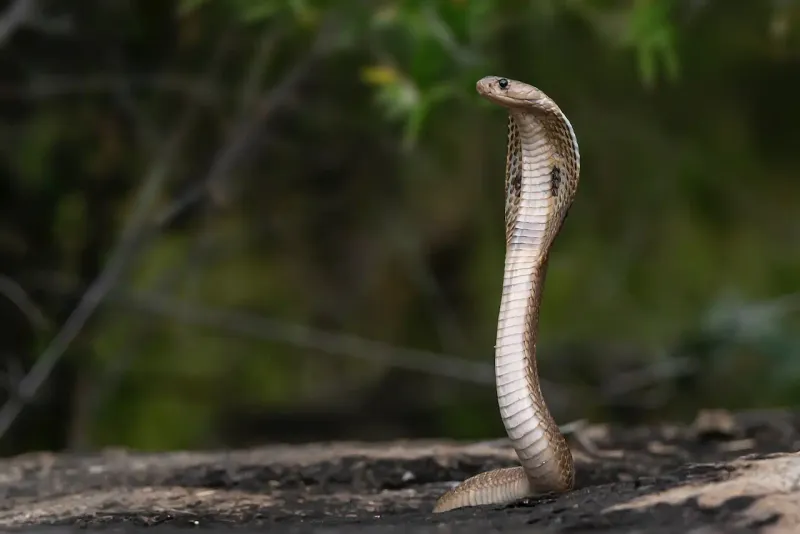
The mating rituals of the king cobra are as fascinating as the snake itself. During the breeding season, males engage in a ritualistic dance to win over potential mates.
This dance involves intricate movements and displays of agility, showcasing their strength and endurance.
The courting process is not just about physical displays; it also involves chemical communication through pheromones. The male releases these to attract females, adding another layer of complexity to their mating behavior.
This blend of physical and chemical communication is unique and speaks to the evolved nature of king cobra interactions.
Once a pair has bonded, the female will lay eggs and fiercely guard them until they hatch. This protective behavior is rare among snakes and indicates a deep-seated instinct to ensure the survival of their offspring.
The king cobra’s mating rituals and parental instincts offer a glimpse into their complex social structures and their evolutionary adaptations.
5. Impressive Hood Display
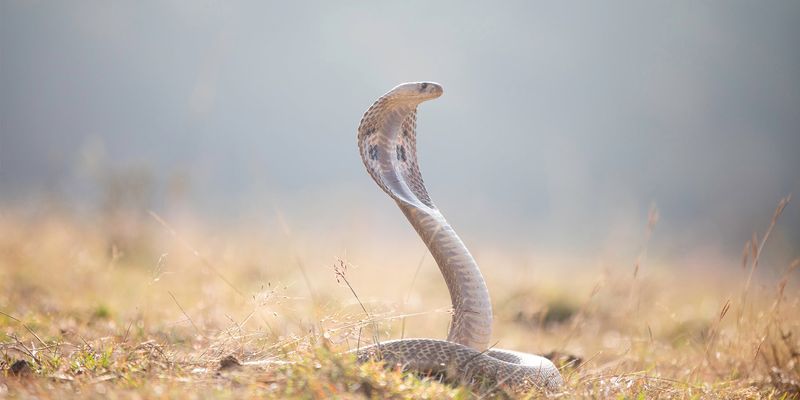
One of the king cobra’s most recognizable features is its hood display. When threatened, the snake expands its hood, making itself appear larger and more intimidating.
This display serves as a deterrent to potential threats and is a hallmark of the cobra’s defensive strategies.
The hood is formed by elongated ribs that can flatten the skin on the snake’s neck, creating the iconic hooded appearance.
This expansion is usually accompanied by a loud hiss, further enhancing the cobra’s intimidating presence. The king cobra’s hood is not just for show; it plays a critical role in its survival by warding off predators.
This behavior is a perfect example of how animals use physical adaptations to communicate and protect themselves.
In the wild, the ability to ward off threats without engaging in physical conflict is invaluable, allowing the king cobra to conserve energy and avoid unnecessary risks.
6. Venomous But Shy
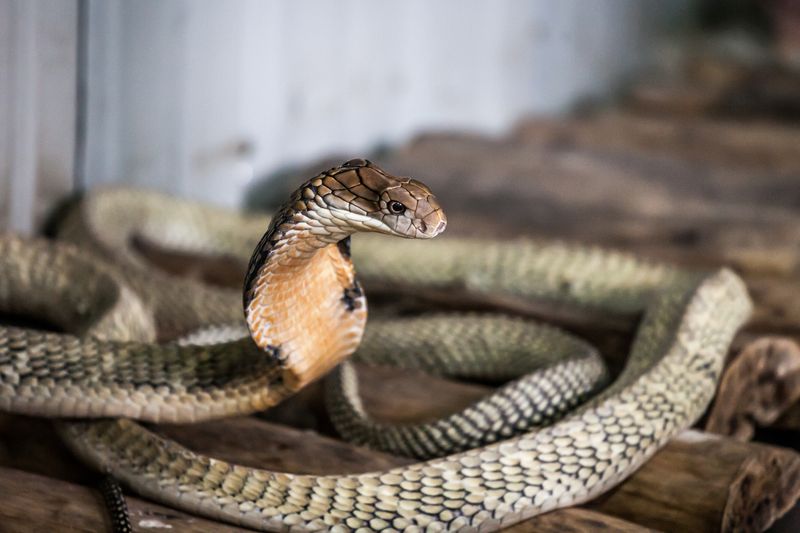
Despite their fearsome reputation, king cobras are generally shy creatures that prefer to avoid confrontation.
They are equipped with a powerful venom that can be lethal, yet they often choose to retreat rather than engage in unnecessary battles.
This shy nature is part of their survival strategy, as it minimizes the risk of injury from encounters with larger animals or humans.
When left undisturbed, king cobras move silently through the forest, hunting and patrolling their territory without attracting attention.
Understanding this aspect of their behavior is crucial in dispelling myths about their aggressiveness. While they will defend themselves if provoked, king cobras typically avoid populated areas and human interaction.
This shy nature highlights their role as a balanced predator, focusing on survival rather than confrontation.
7. Cultural Significance
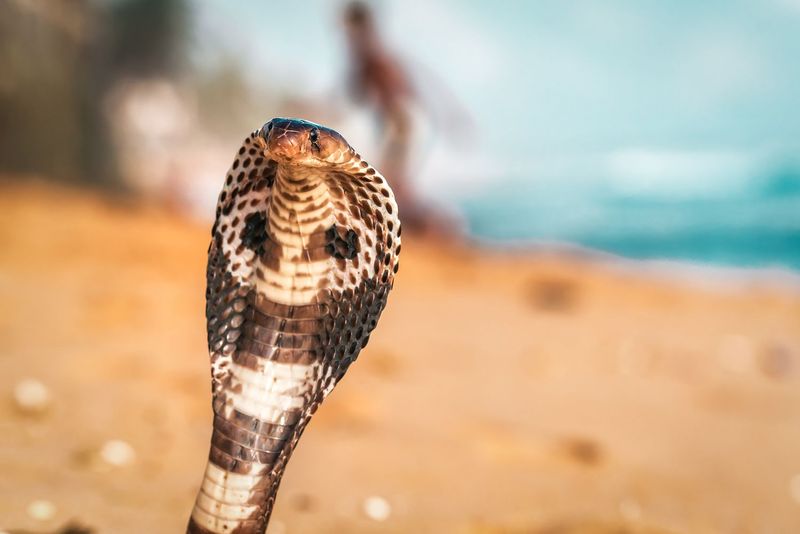
The king cobra holds a significant place in the cultures of Southeast Asia, where it is often revered and respected. In many regions, these snakes are considered symbols of power and protection. They frequently appear in folklore, mythology, and are even celebrated in festivals.
These cultural beliefs reflect the deep connection between humans and the natural world, where the king cobra is both feared and revered. In some traditions, the sighting of a king cobra is considered a good omen, bringing luck and prosperity to those who encounter it.
Understanding the cultural significance of the king cobra provides insight into how humans have coexisted with these magnificent creatures for centuries.
This relationship underscores the importance of conservation efforts, ensuring that the king cobra continues to thrive in its natural habitat while maintaining its cultural legacy.
8. Habitat And Range
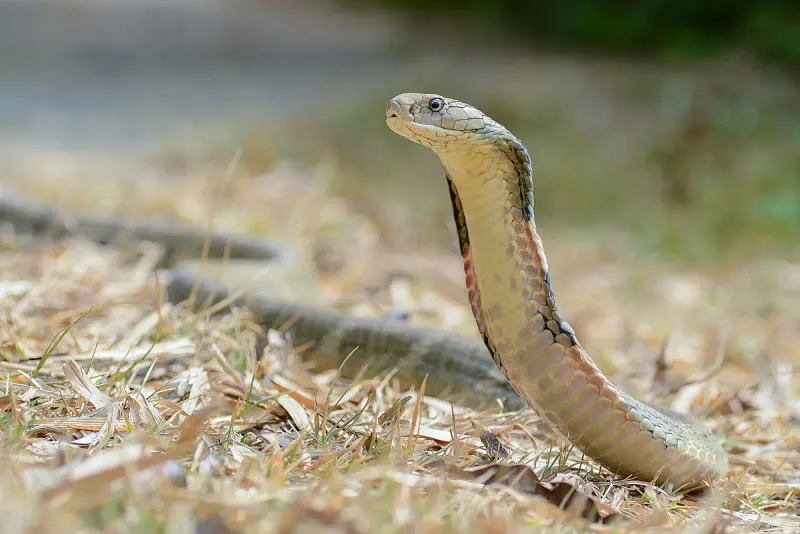
King cobras have a wide range of habitats, predominantly found in the forests of Southeast Asia. They prefer dense, tropical forests where they have ample cover for hunting and hiding. This choice of habitat helps them avoid predators and find abundant food sources.
Their range extends from India through Southeast Asia to the Philippines, thriving in both humid jungles and mangrove swamps.
This adaptability to different environments showcases their resilience and ability to thrive in diverse conditions. These habitats provide the ideal conditions for their survival, with plenty of prey and suitable nesting sites.
Preserving these habitats is crucial for the king cobra’s continued survival. As deforestation and habitat loss threaten their natural environments, conservation efforts become increasingly important.
Protecting the king cobra’s habitat ensures that this incredible species continues to play its vital role in the ecosystem.
9. Record-Breaking Venom
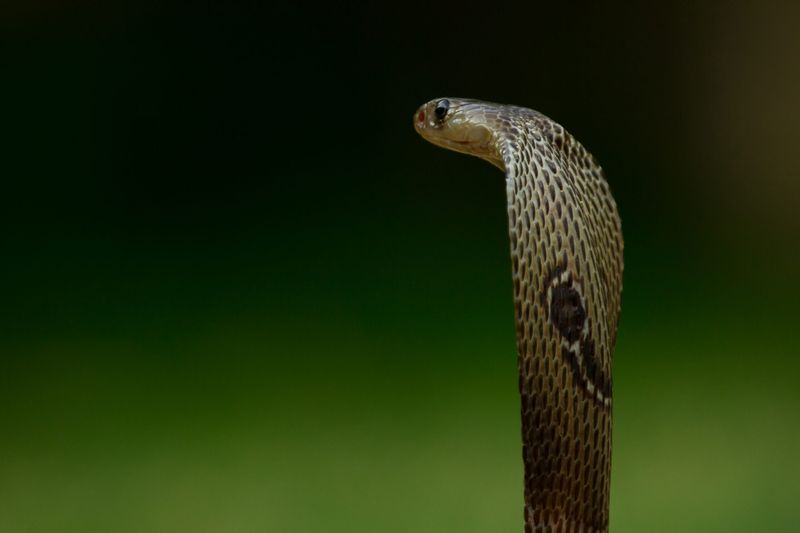
The king cobra’s venom is legendary, known for its potency and the sheer volume that a single bite can deliver.
Unlike many other snakes, the king cobra injects a large quantity of venom, making it extremely dangerous to its prey. This venom is primarily neurotoxic, affecting the nervous system and leading to paralysis.
Despite its potency, the king cobra’s venom is not primarily used for defense. Instead, it is a tool for hunting, allowing the snake to quickly immobilize its prey. This efficiency in hunting underscores the king cobra’s role as an apex predator.
Understanding the nature of its venom helps in developing antivenoms and medical treatments. Research into king cobra venom has contributed to advances in medical science, showcasing the snake’s importance beyond its ecological role.
This dual significance in both nature and science highlights the complex relationship between humans and the king cobra.
10. Remarkable Lifespan
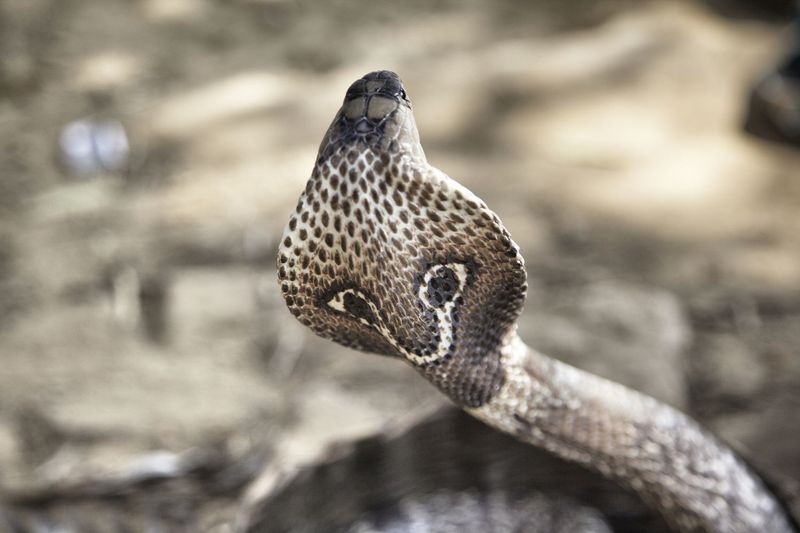
King cobras have an impressive lifespan, often living up to 20 years in the wild. This longevity is attributed to their adaptability and efficient hunting skills. As they age, they continue to grow, becoming even more formidable predators over time.
Their long lifespan allows them to play a continuous role in their ecosystem, controlling the populations of prey species and maintaining balance within their habitat. This extended lifespan also provides ample opportunity for observation and study, offering insights into their behavior and biology.
For researchers and wildlife enthusiasts, the king cobra’s lifespan is a window into the complex life of these reptiles.
It highlights their resilience and adaptability, enabling them to survive and thrive in the ever-changing environments of Southeast Asia. Their long life is a testament to the success of their evolutionary strategies, ensuring their presence in the ecosystem for generations.
11. Vocal Communication
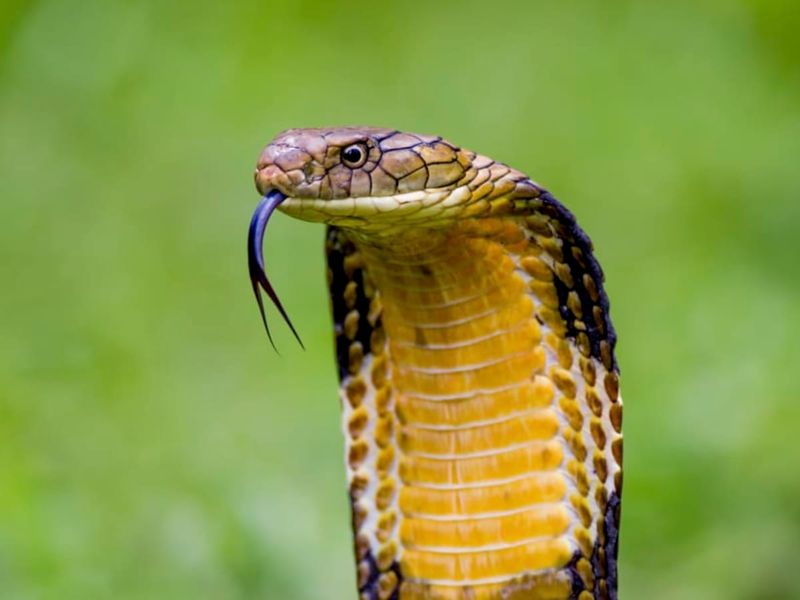
Unlike many snakes, king cobras are known for their ability to vocalize. Their signature hiss is not just a warning but a form of communication. This sound is produced by the rapid expulsion of air, creating a loud and distinctive noise that can be heard from a distance.
This vocal ability is part of their defensive behavior, used to ward off threats without engaging physically. The hiss serves as an auditory warning to potential predators, allowing the snake to avoid unnecessary confrontations.
Vocal communication in king cobras is a fascinating aspect of their behavior, highlighting their ability to interact with their environment in unique ways.
This ability adds another layer to their already complex survival strategies, showcasing their adaptability and intelligence. Understanding this communication can help in developing better conservation strategies and fostering human-snake coexistence.

